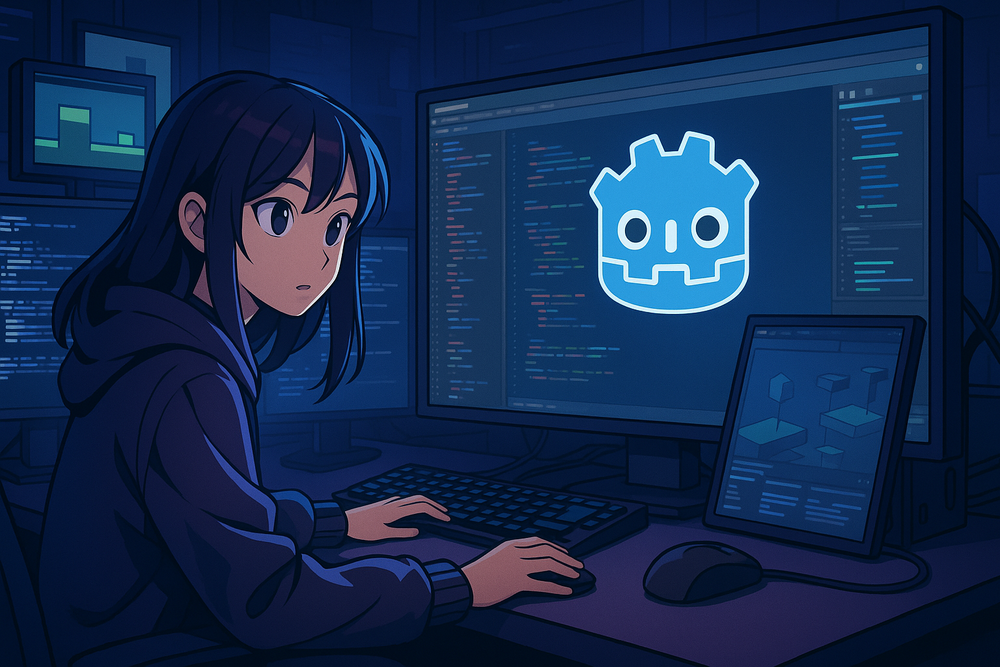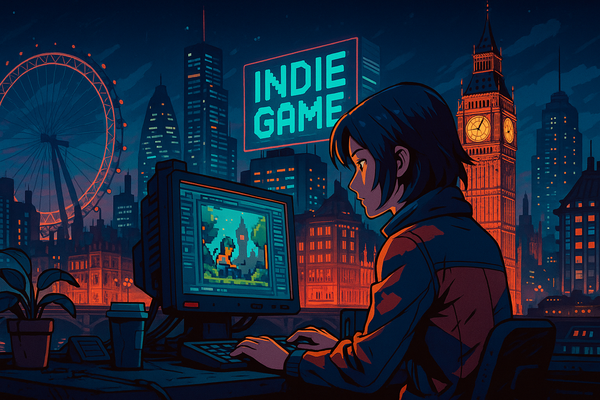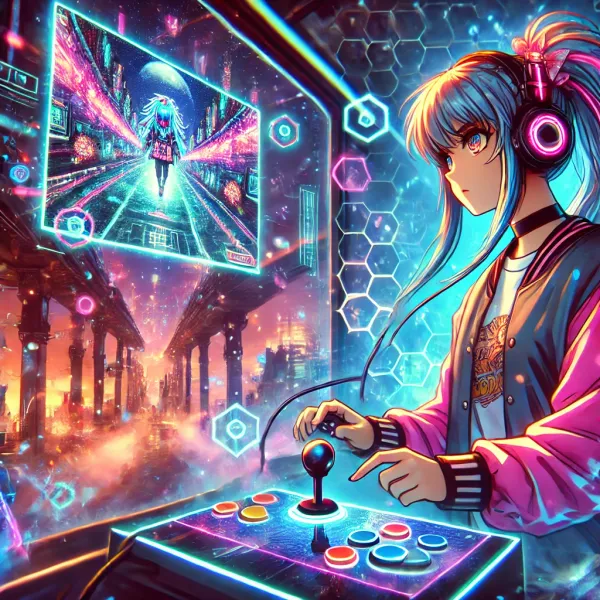Godot Engine’s ascendancy: Empowering the next wave of indie developers
The game development landscape is witnessing a tectonic shift as the Godot Engine rises from niche underdog to mainstream contender. In 2024 and 2025, Godot’s popularity has surged dramatically, driven by a perfect storm of industry upheavals and community triumphs. This open-source, no-royalty engine is rapidly becoming the go-to choice for a new generation of indie developers, offering creative freedom and peace of mind in an era when trust in proprietary engines has been shaken. With big competitors faltering and a string of indie hits proving Godot’s capabilities, the engine’s ascendancy marks an inspiring turn for game creators worldwide.
Godot’s meteoric rise in 2024–2025
It wasn’t long ago that Godot was considered a fledgling project, but recent events have catapulted it into the spotlight. In late 2023, Unity Technologies – maker of one of the most popular game engines – announced a highly controversial new pricing model: a “Runtime Fee” that would charge developers per game install once certain thresholds were passed. The backlash was swift and fierce. Developers big and small expressed outrage at this sudden change, which many saw as a betrayal of trust. The result? A wave of developers began evaluating alternative engines, and Godot emerged as the biggest beneficiary of Unity’s misstep.
By early 2024, Godot’s user base had exploded. In fact, the engine reportedly doubled its user base in the span of a single month following Unity’s fee announcement – a rate of growth the project had never seen before. For an engine that previously took a year to double its users, this was unprecedented. It was a clear signal that thousands of developers were downloading and trying Godot, many for the first time. Godot’s project manager Rémi Verschelde even welcomed these “Unity refugees,” though he gently urged them not to panic-switch engines without understanding the differences. This humility underscored Godot’s community ethos: they want new users, but only if they come with realistic expectations and a willingness to grow with the engine.
Crucially, Godot’s surge was not just a flash in the pan. The Godot Foundation moved quickly to capitalize on the momentum, launching a Godot Development Fund to secure stable funding for the open-source project. The broader game dev community rallied behind Godot as well – notably, Re-Logic (the studio behind Terraria) donated $100,000 to Godot’s development, alongside similar donations to other open tools.
“All we ask in return is that they remain good people and keep doing all that they can to make these engines powerful and approachable for developers everywhere,”
Re-Logic stated, emphasizing the goodwill fueling Godot’s rise. With fresh funding, swelling ranks of users, and a palpable buzz around it, Godot entered 2024–2025 as more than just an indie alternative – it became a movement.
Godot vs Unity: Reaping Unity’s stumbles
The engine switch frenzy of late 2023 was undoubtedly sparked by Unity’s fumbles, so it’s worth comparing how Godot differs from its formerly-dominant rival. Unity had long been the default choice for many indie teams – it’s a powerful 2D/3D engine with a vast asset store and years of learning resources. However, Unity’s trust with developers took a hit after its pricing U-turn. Although Unity eventually revised and even walked back the worst parts of the Runtime Fee policy amidst public outcry, the damage was done. Many developers began to question whether tying their livelihood to a proprietary engine was wise, especially one that could change terms unpredictably.
Godot, by contrast, offers a sanctuary of predictability and developer-friendly licensing. The engine is completely free under the MIT open-source license, with no royalties, no subscription fees, and no strings attached. Whether an indie creator makes a small freeware title or a breakout hit selling millions, Godot’s cost remains zero – and that’s a powerful attraction after Unity’s monetization turmoil. As the Perforce Game Development Survey noted, one of the major reasons devs have been moving away from Unity is frustration with its pricing model. Godot’s guarantee of “full rights to the game you build” has become a selling point that Unity simply can’t match without major policy changes.
Functionally, both Unity and Godot are capable 2D and 3D engines – in fact, Godot’s feature set has grown rapidly, to the point where it can comfortably handle a wide range of projects that once might have required Unity. Godot uses a scene/node system and offers an intuitive built-in scripting language (GDScript) alongside support for C# and other languages, making the transition easier for those coming from Unity’s C# environment. There are certainly still differences – Unity’s ecosystem is more mature in some areas, boasting a gigantic Asset Store of plugins and a decade’s worth of third-party tools (over 70,000 packages, versus around 3,000 free assets in Godot’s library). Additionally, Unity’s documentation and official learning materials remain a strong advantage. Godot’s community is racing to catch up, producing demos, add-ons and tutorials, but new adopters often note the comparative scarcity of plug-and-play resources.
Then there’s the question of stability and features. Unity has been battle-tested in thousands of productions and offers targeted services (analytics, advertising SDKs, etc.) that Godot doesn’t bundle. However, many indies realized they didn’t need all those bells and whistles – or they preferred open-source equivalents. The events of 2023 proved to be a great equalizer: Unity’s engine might be technically robust, but its corporate decisions undermined developer confidence, causing even its strengths to be re-evaluated through a lens of “what if they change the deal again?” Meanwhile, Godot’s community-driven development earned goodwill. When you use Godot, you’re not at the mercy of a single corporation’s strategy; the engine is maintained by hundreds of contributors and guided by its users’ needs. That independence and transparency have become perhaps Godot’s greatest feature in the eyes of developers seeking stability.
Godot vs Unreal Engine: A lean, accessible alternative
Another comparison that arises amid Godot’s ascendancy is with Unreal Engine, the other industry giant. Unreal Engine 5, with its cutting-edge graphics (Nanite micro-polygons, Lumen lighting, etc.), sits at the pinnacle of high-end game development – but it often feels like overkill for small studios. Epic Games’ Unreal is technically open source in that you can view and modify the engine code, but it’s not open license; developers must agree to Epic’s terms, including a 5% royalty on revenue beyond the first $1 million. For many indie devs operating on shoestring budgets, the prospect of paying royalties if they strike gold is a drawback (albeit a “good problem to have”). Godot, by comparison, has zero royalties and no strings – a developer’s profits are entirely their own, no matter how big their success.
Performance-wise, Unreal still has the edge for bleeding-edge 3D graphics and AAA scope. Big studios with hundreds of employees will likely continue to choose Unreal for its advanced tools, visual scripting (Blueprints), and proven track record on blockbuster games. Indie teams, however, often find Unreal’s heavyweight nature a barrier: it demands significant computing resources and has a steep learning curve, especially for solo creators or small teams. This is where Godot shines as a lean, accessible alternative. The Godot editor’s download size is only on the order of a few gigabytes (around ~8 GB with all templates), and it can run smoothly even on modest laptops – a far cry from Unreal, which can require tens of gigabytes and high-end hardware to use comfortably. Getting started with Godot is remarkably quick; there’s no lengthy install or compiling process for the editor, meaning newbies can jump into making their first game within minutes of downloading the engine.
In terms of usability, developers often praise Godot’s simplicity. The interface is clean and the node-based scene system keeps projects organized logically. This contrasts with Unreal’s myriad of windows and tools that, while powerful, can overwhelm newcomers. For an indie developer who might be wearing multiple hats (artist, designer, programmer in one), Godot’s approachability is a huge plus. It’s not an all-or-nothing choice, of course – some creators prototype in Godot for speed and then consider moving to Unreal if they truly need the extra horsepower. But more and more are finding that Godot’s capabilities are “good enough” for a vast range of 2D and 3D indie games, without the bloat and complexity of its big-engine rivals.
Meanwhile, Epic Games has indirectly supported Godot’s growth as well. Through its Epic MegaGrants program, Epic has awarded funding to the Godot project in the past, recognizing the value of a healthy, open game development ecosystem. This spirit of coexistence suggests that while Unreal dominates the AAA space and Unity has historically led the indie mid-tier, Godot is carving out its own supportive niche – one focused on openness, lightness, and empowering creativity over pushing technical limits. The next wave of indie developers now truly has a spectrum of engines to choose from, and Godot stands out as the engine that puts creators first.
Indie Success Stories Built with Godot
Nothing drives adoption like success stories. As Godot matures, a growing number of indie games developed with Godot have made waves – proving that this engine can deliver commercial hits and critical darlings alike. These games span a variety of genres and styles, underscoring Godot’s flexibility and power in the right hands:
- Brotato (2022) – A top-down arena shooter roguelite that became a viral Steam hit. Brotato’s addictive gameplay and tens of thousands of players demonstrated that Godot could handle fast-paced action and hordes of on-screen entities with ease. Its success (selling over a million copies by some estimates) put Godot on the radar of many action-roguelike fans and developers.
- Dome Keeper (2022) – This mining defense roguelike won the Ludum Dare game jam and then evolved into a best-selling indie title – all built in Godot. Dome Keeper’s polished pixel art, smooth performance, and console releases showed that even a two-person team could leverage Godot to deliver a hit game.
- The Case of the Golden Idol (2022) – An award-winning investigative puzzle game, Golden Idol earned critical acclaim for its clever design and narrative. Developed in Godot, it proved the engine’s suitability for complex logic and unique 2D art styles. The game’s success (earning accolades like Rock Paper Shotgun’s Game of the Year in its genre) gave Godot a foothold in the puzzle/adventure scene.
- Halls of Torment (2023) – Riding the wave of the “survivors” ARPG craze, Halls of Torment launched in Early Access to impressive sales. This gothic, retro-styled action RPG – clearly inspired by Diablo and Vampire Survivors – uses Godot for its hybrid 2D/3D rendering and has garnered a strong player base (with 94% positive Steam reviews). It’s a prime example of Godot handling intense combat, physics, and a large amount of content over dozens of hours of gameplay.
- Cassette Beasts (2023) – A sprawling monster-collecting RPG that stands as one of Godot’s most ambitious projects to date. Cassette Beasts not only released on PC to glowing reviews, but also became the first Godot-powered game to launch across multiple consoles (Nintendo Switch and Xbox). Developed by Bytten Studio (a two-person team), the game features a 2.5D open-world, turn-based battles, and online co-op – all achieved in Godot 3.5. Its successful multi-platform release proved that with enough ingenuity, Godot games can reach audiences on par with any Unity or Unreal title. By demonstrating Godot’s scalability for a larger scope game, Cassette Beasts has inspired many other indie devs to believe they too can build their dream RPG without a million-dollar engine.
- Cruelty Squad (2021) – An earlier example but worth noting, this bizarre retro-FPS/immersive-sim became a cult classic due to its surreal aesthetics and unconventional design. Made in Godot, Cruelty Squad showed that the engine could power fully 3D first-person games with a unique visual style. Its success (achieving strong sales and streaming popularity) was a wake-up call that Godot isn’t limited to just “cute 2D pixel art” games – it can get weird, wild, and first-person too.
These titles are just a sampling – the list of “Made with Godot” games grows longer each month, and includes everything from cozy farming sims (Cornbread) to intense strategy games (Hex of Steel). The Godot Showcase highlights many of these successes, and every win gives more credibility to the engine. With each successful release, more developers realize that “if they built that in Godot, so can I.”
It’s a virtuous cycle fueling Godot’s adoption: community successes lead to more newcomers trying the engine, which in turn yields more projects and success stories.
New tools and an expanding Godot ecosystem
Godot’s ascendancy isn’t happening in isolation – it’s accompanied by a flourishing ecosystem of tools, plugins, and services that amplify the engine’s capabilities. A standout example in 2024 is the upcoming Action Game Maker by Gotcha Gotcha Games (the creators of the famous RPG Maker series). Action Game Maker is a game development toolkit built entirely on Godot Engine, aimed at enabling 2D action game creation with zero coding required. In essence, it provides a visual, node-based interface (building on Godot’s own scene system) that lets aspiring creators design levels, events, and character behaviors through drag-and-drop and visual scripting. By including a wealth of sample assets and templates, Action Game Maker dramatically lowers the barrier to entry – a teenager or hobbyist with no programming knowledge can jump in and start crafting a platformer or action-RPG using this toolkit.
The impact of such a tool on the Godot ecosystem could be huge. Bringing 2D game creation to “those of all skill levels,” as Gotcha Gotcha Games touts, means Godot might attract an even wider audience – including creators who might have otherwise used RPG Maker, GameMaker, or Unity’s Bolt/PlayMaker visual scripting. It’s a testament to Godot’s flexibility that a commercial product like Action Game Maker chose Godot as its foundation; the developers cited Godot’s lightweight editor, easy UI, and passionate community as major reasons for their choice. In turn, when Action Game Maker releases (Steam wishlist pages are already up), it will likely funnel more users into the Godot fold. A hobbyist could start with Action Game Maker’s no-code environment, and as they grow more confident, transition into full Godot scripting to push their project further – all without switching engines.
Beyond Action Game Maker, the Godot ecosystem in 2024–2025 boasts a range of tools and plugins that make development easier. The community-driven Asset Library offers thousands of free add-ons, from advanced lighting shaders to AI pathfinding modules, ready to plug into any project. Notable third-party tools built on Godot include Pixelorama (a pixel art editor), Material Maker (a procedural texture authoring tool), and RPG in a Box (an all-in-one voxel game creation suite) – each of these demonstrates how Godot isn’t just an engine to make games, but also a platform upon which other creation software can be built. This growing ecosystem is reminiscent of Unity’s early years, but with an open-source twist: most Godot add-ons are community-made and free, with source code available for customization. For indie developers, this means lower costs and the ability to tweak tools to their needs, rather than being locked into proprietary extensions.
Another exciting development is W4 Games, a company co-founded by Godot’s lead developers with the mission of offering professional support and services around Godot. In late 2024, W4 Games began rolling out solutions for console exports, addressing one of the few areas where Godot historically lagged (official support for PlayStation, Xbox, Switch). With W4’s help, developers can more easily port their Godot games to consoles without having to reinvent the wheel or break licensing terms. This is a game-changer for indies who dream of seeing their game on a Nintendo or Sony platform – and it’s happening precisely because the Godot ecosystem is maturing to fill in gaps that once made some developers hesitate.
The takeaway is that Godot is no longer a lone engine fighting for recognition – it’s now the center of a burgeoning ecosystem of companies, tools, and community initiatives. From visual scripting toolkits like Action Game Maker to improved console support and a vibrant asset library, these enhancements further empower indie creators to succeed with Godot. The ecosystem growth also signals that Godot’s rise is sustainable; it’s not a fad, but a platform with expanding infrastructure behind it. Indie developers choosing Godot today find not just an engine, but a supportive environment that has their back at every step – from development to distribution.
Open-Source freedom, community, and accessibility
Underlying all these advantages is Godot’s fundamental identity as an open-source engine. Unlike Unity or Unreal, Godot is not controlled by a single corporate entity; it’s developed by a community of volunteers and contributors spread around the world. Over 600 people have contributed code to Godot’s development, and countless more contribute by creating tutorials, answering questions, and building add-ons. This community-driven model means that Godot’s roadmap aligns with what developers actually need. Features and fixes are prioritized based on community feedback, and anyone can suggest changes or even implement them. It’s a refreshing contrast to proprietary engines, where users have little say in the engine’s evolution.
For indie developers, Godot’s open nature brings very tangible benefits: no fees, no royalties, and full ownership of your game. The MIT license Godot uses grants developers the freedom to use the engine for any purpose and release their games however they wish. You’ll never be surprised by a royalty invoice or a change in licensing terms down the road. In an industry where tools like Unity can suddenly alter their pricing model, Godot’s promise of “guaranteed free for life” is not just reassuring – it’s revolutionary. Creators can plan long-term with Godot without budgeting for engine costs or fearing that success will lead to unexpected fees. This creative and financial freedom cannot be overstated in its importance to the next wave of indie developers, many of whom operate on razor-thin budgets.
The open-source advantage also extends to accessibility and learning. Because Godot is free, anyone can download it and start learning game development – no financial barrier to entry. This has led to Godot being widely adopted in education and among young developers around the globe. Schools and nonprofits use Godot to teach programming and game design, knowing that students can continue using it at home without cost. The engine’s gentle learning curve (helped by a Python-like scripting language for beginners) and its lightweight install make it ideal for newcomers. Aspiring developers can run Godot on older hardware and see results quickly, which is incredibly empowering. Moreover, if something goes wrong or you wonder “how does Godot do that under the hood?”, you can crack open the source code and inspect or modify it yourself – an invaluable learning tool for the curious.
Community support is another pillar of Godot’s strength. The enthusiasm within the Godot community is often noted by newcomers – forums, Q&A sites, Discord servers, and Reddit are buzzing with friendly developers ready to help each other. The tone is set from the top: the Godot team fosters an inclusive, helpful atmosphere where even the engine’s lead contributors actively engage with users to troubleshoot issues or give advice. This means that when an indie dev runs into a problem or a limitation, they have multiple avenues for support: ask the community and likely get a quick solution or workaround, or even file an issue on GitHub and potentially see it addressed in a future update. The sense of collective ownership – that “we’re all in this making Godot better together” – gives developers confidence that they won’t be left stranded. Contrast this with using a closed engine, where a bug might go unfixed for years unless you have an enterprise support contract. With Godot, if something is truly blocking developers, the community often rallies to improve it.
Finally, Godot’s open-source ethos encourages innovation and customization. Developers aren’t stuck with a black box – if you need a custom render feature or a tweak to the physics engine, you can dive into the code and implement it (or hire someone who can). Some studios have created their own internal forks of Godot optimized for their games, which is perfectly legal under the license. Others contribute plugins that extend Godot in new directions (for example, adding VR support, or new multiplayer solutions). The result is an engine that’s evolving organically to meet diverse needs, rather than trying to dictate a one-size-fits-all solution. For indie teams on the cutting edge – say, experimenting with new genres or tech – this flexibility can be the deciding factor that makes Godot the better choice over more rigid proprietary engines.
A bright future for indie developers
As we move through 2025 and beyond, it’s clear that Godot’s ascendancy is more than a passing trend – it represents a real shift in how indie developers empower themselves. In the wake of industry shake-ups, creators are choosing tools that align with their values: transparency, affordability, and community-driven innovation. Godot checks all those boxes. It has transformed from a curious outsider into a robust engine that’s launching Steam best-sellers and console releases. More importantly, it has done so while remaining true to its open-source roots and fostering an environment where developers help each other succeed.
The next wave of indie developers will be a force to be reckoned with.
Armed with engines like Godot, they can create without asking permission and without fear of corporate curveballs. The barrier to entry for making games is lower than ever: a solo developer can download Godot for free today and potentially publish a hit game tomorrow – a game they fully own and control.
That sense of creative empowerment is driving a renaissance in indie game development, one where unique ideas and personal projects can flourish.
Godot Engine’s rise in popularity is both a cause and a reflection of this new era. Its ascendancy has given indie devs a viable, even preferable, alternative to the status quo. And in turn, the passion and creativity of those devs are pushing Godot to improve at a lightning pace.
The relationship is symbiotic: Godot empowers developers, and developers empower Godot. With major engines like Unity and Unreal now sharing the stage, Godot has secured its place as an equalizing force – one that puts power back into the hands of creators. For anyone dreaming of making games on their own terms, there has never been a more exciting time to jump in and join this thriving community.
The tools are ready, the support network is welcoming, and the success stories are proving that with Godot, the only limit is your imagination.



